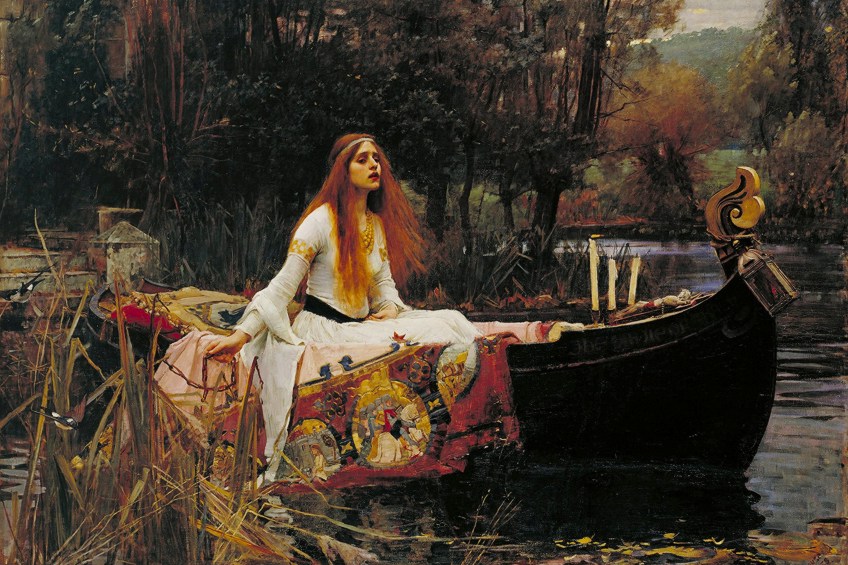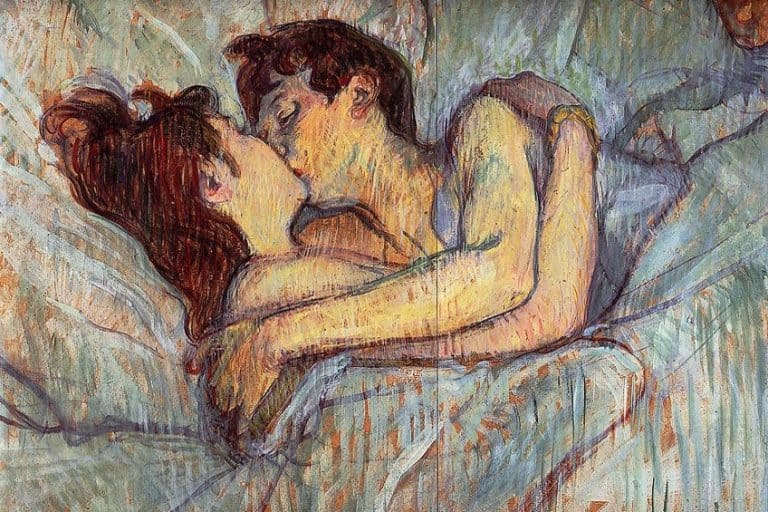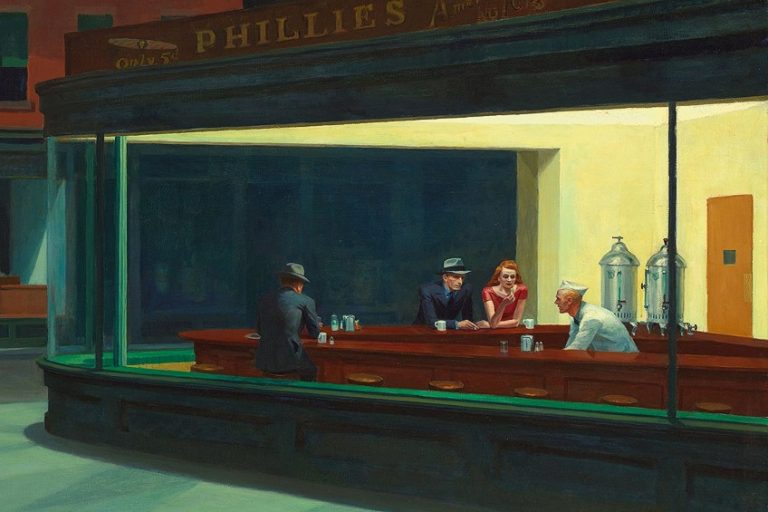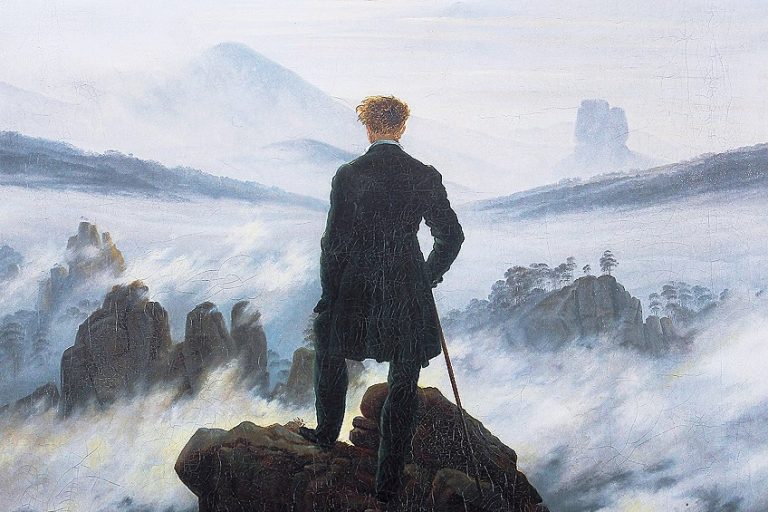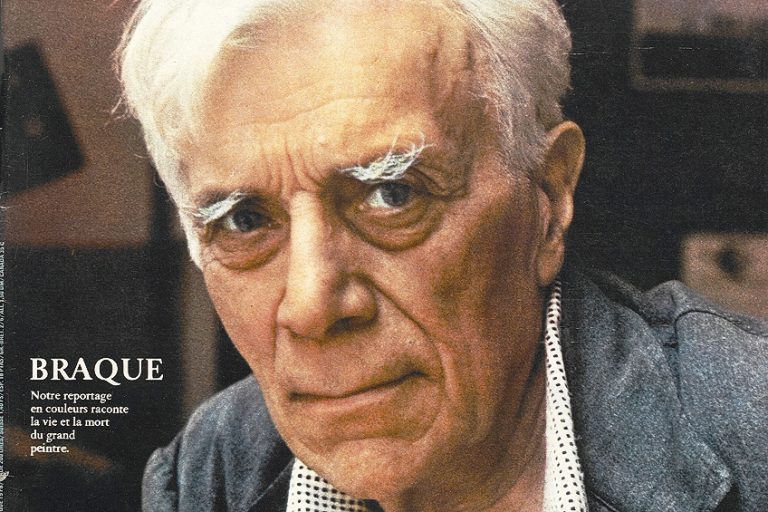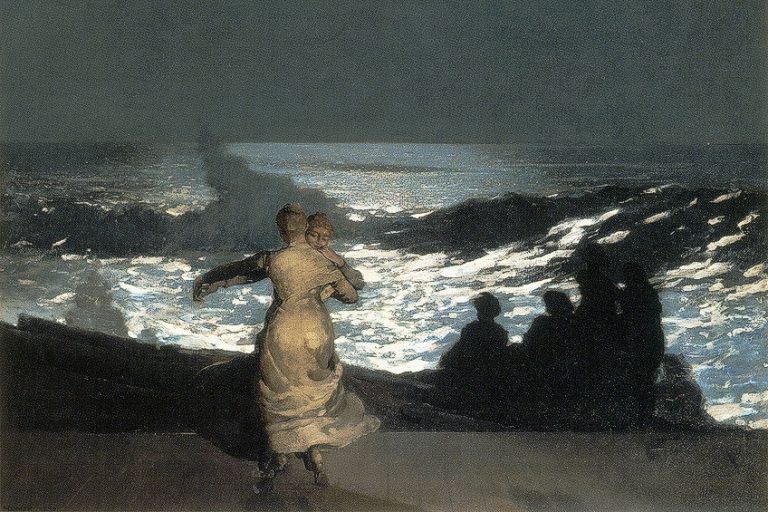Victorian Paintings – Looking at the Best Victorian-Era Art
Victorian paintings communicate the hopes and desires of a mighty England redefining itself in shifting tides. Victorian artwork encompasses movements such as Classicism and Neoclassicism, as well as Romanticism and Impressionism. Each of these movements evolved its own aesthetic style of Victorian-era artworks.
An Introduction to Victorian-Era Paintings
William Holman Hunt founded the pre-Raphaelite Brotherhood in 1848. Their goal was to create vibrant photographic paintings inspired by nature. They embraced the support of written texts by Shakespeare and other peers in order to transmute reality into typological symbols. The group opposed the creative ideas of art training at the Royal Academy, as well as the customs. Other Victorian-era art genres and trends include landscapes and seascapes, fairy paintings, portraits, and Orientalism.
Tourism to India, business and political interest in the Middle East, the prominence of Britain’s Illustrated London News, religious fervor, and a variety of other causes all contributed to the rise of Orientalism in Victorian-era paintings.

The east piqued the imagination of painters of Victorian artworks because it offered a forum for Christian art. While there were certain painters who were interested in current Islamic life, they drew a lot of attention from the public. The fairy paintings could not be excluded from the Royal Academy’s shows in the 19th century.
The topics of the fairy artworks in Victorian paintings were frequently taken from Shakespeare’s writings. As a result, there was a strong interest in illustrated publications. Fairy art shows at the Royal Academy lasted into the 20th century.
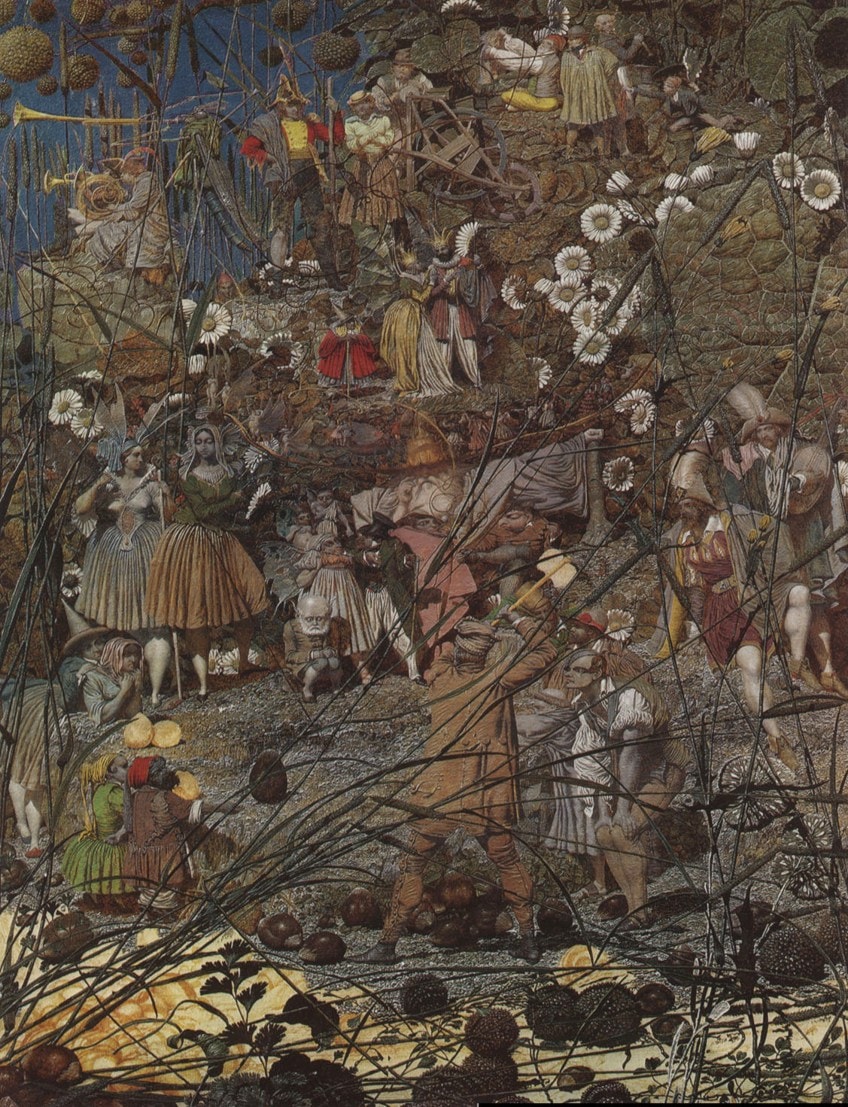
Famous Victorian Paintings
Victorian artworks represented all of the age’s Christian and Imperial assumptions. It included historical painting, many styles of genre painting, such as landscape painting, and, naturally, portrait art of all kinds. Themes about fairies were common, and aspects of the feminine were always a prominent feature of Victorian-era art. Let us take a look at some of the most famous examples of Victorian artwork.
Ophelia (1852) by John Everett Millais
| Dimensions | 76 cm x 1,12 m |
| Date Created | 1852 |
| Medium | Oil Paint |
| Currently Housed | Tate Britain, London |
One of the most well-known pictures from Shakespeare’s play Hamlet is Millais’ depiction of Ophelia’s terrible demise as she falls into the water and drowns. The Pre-Raphaelites were noted for painting themes from current literary works in historical attire. They worked directly from nature, as authentically as feasible and with remarkable precision.
Millais created Ophelia in two places between 1851 and 1852. He produced the scenery outdoors, beside the Hogsmill River, and the image of Ophelia indoors, at his London studio. It was typical for painters to work outside to generate drawings around the time Millais was creating. They then returned to their studio and used these as references to produce a larger final artwork.
Millais and his pre-Raphaelite contemporaries, on the other hand, completed their works outdoors in the open areas, which was unique at the time.
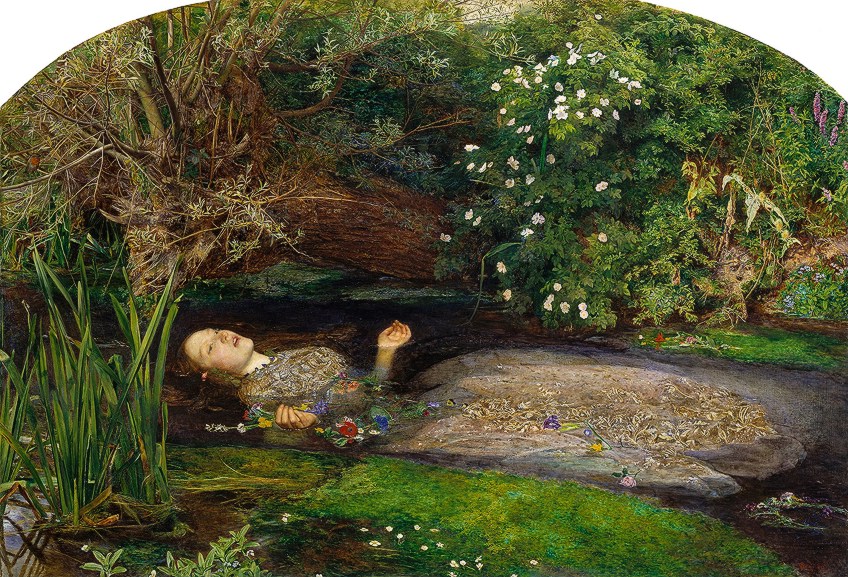
Millais did not devote as much time to painting the image of Ophelia as he did to painting the countryside. Historically, the environment was thought to be the least essential aspect of a picture and hence painted last. Millais and the Pre-Raphaelites thought that the environment was as important as the person, thus it was created first for Ophelia. Millais’ model was a 19-year-old lady named Elizabeth Siddall. Elizabeth stood in a bathtub filled with water for Millais to give the appearance of Ophelia drowning in the river. Oil lamps were put beneath the water to keep it warm.
Millais was so involved in his work that he didn’t even notice when the lighting went out in one instance!
The Scapegoat (1856) by William Holman Hunt
| Dimensions | 86 cm x 140 cm |
| Date Created | 1856 |
| Medium | Oil on Canvas |
| Currently Housed | Lady Lever Art Gallery, Port Sunlight |
This well-known painting represents the “scapegoat” specified in Leviticus. On the Day of Atonement, a goat would’ve been sent out with its horns covered in scarlet fabric, signifying the community’s crimes. Hunt began painting on the shores of the Dead Sea and continued at his London workshop. The piece is available in two versions: a tiny version in vivid color with a dark-haired goat and a rainbow which is housed at the Manchester Art Gallery, and then there is a bigger copy in more subdued tones with a light-haired animal which is located at Port Sunlight’s Lady Lever Art Gallery.
Both were made at the same time frame, with the lesser Manchester copy characterized as “preliminary” to the bigger Lady Lever version, which was displayed.
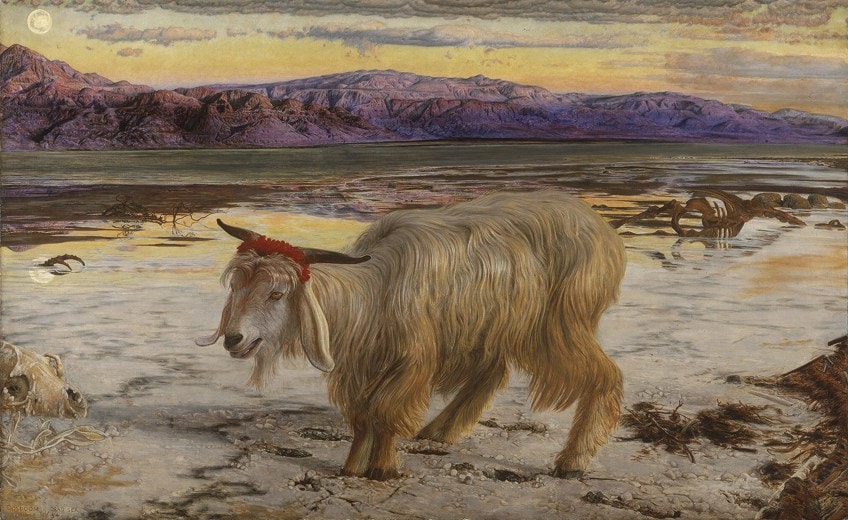
The picture was created in Sodom, on the outskirts of the Dead Sea’s salt-encrusted shoals. The peaks ahead are Edom’s. He created the majority of the piece on site in 1854, but finished it in London the subsequent year, adding minor touches in 1856 before exhibiting it at the academy.
The artwork was Hunt’s sole significant work created on his first journey to the Holy Land, which he took following a religious faith dilemma.
Hunt aimed to tackle the link between religion and fact by experiencing the actual settings of Scriptural passages. Hunt had encountered Henry Wentworth Monk, a visionary with unique views regarding the significance of the scapegoat and the approach of the Last Judgement, while in Jerusalem. Monk was fascinated with Zionism in particular.
Elaine (1865) by Emma Sandys
| Dimensions | 36 cm x 39 cm |
| Date Created | 1865 |
| Medium | Oil on Panel |
| Currently Housed | Wightwick Manor, West Midlands |
Elaine by Emma Sandys is an oil painting on a panel. Elaine, wife of Lancelot, female character of Mythology, Is positioned turned to the right, hand lifted to her left cheek, in medieval dress, pearl jewelry, long flowing tresses on a flowery backdrop. She is the heroine of Tennyson’s Idylls of the King (1859), whose infatuation for Lancelot drives her insane. The theme is based on the Arthurian stories popularized by Tennyson’s Idylls of the King, which was published in 1859. Elaine became infatuated with Lancelot, but her feelings were not reciprocated.
She was seen as a figure of sorrow in the mid-Victorian era, and she was a favorite subject for painters, particularly women.
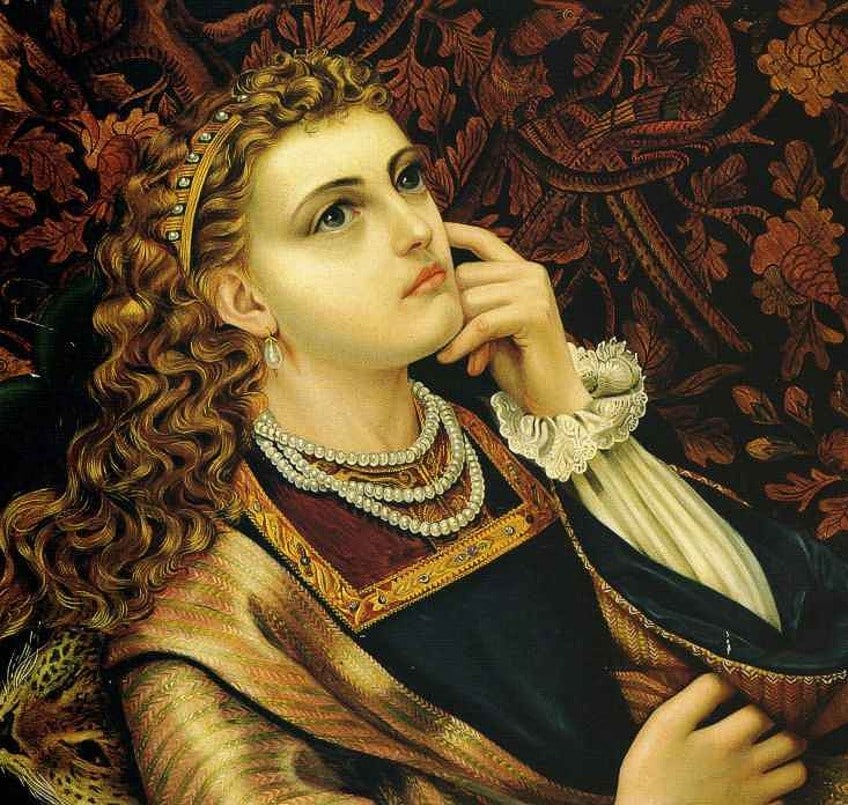
Sandys created at least three different variations of this image. The female subject from books, shoulder level, with the face tilted to one side instead of directly towards the spectator, in medieval garb, and with a flat ornamental backdrop, is similar to the artwork of other Pre-Raphaelite painters. This format was devised by Rossetti, who was influenced by early 16th-century Venetian painting, but Sandys changed it to Elaine by placing the figure diagonally rather than vertically.
The image’s clarity and accuracy are typical of her greatest work.
The Lady of Shalott (1888) by John William Waterhouse
| Dimensions | 1,53 m x 2 m |
| Date Created | 1888 |
| Medium | Oil Paint |
| Currently Housed | Tate Britain, London |
One of John William Waterhouse’s most famous pieces is this classic Victorian-era artwork. It portrays an episode from a poem by Tennyson in which the composer defines the predicament and dilemma of a young lady, tenuously premised on the figure of Elaine of Astolat from Middle Ages Arthurian folklore, who hungered with a forbidden love for Sir Lancelot, who was secluded under an unknown affliction in a building near King Arthur’s Camelot. Waterhouse depicted this figure three times.
The Victorian artwork features the Pre-Raphaelites’ trademark finely painted details and brilliant colors.
It depicts the title figure from the poem, The Lady of Shalott (1842). The Lady was imprisoned in her chambers in the text, under a spell that barred her from going outdoors or even looking straight out windows; her sole view of the outside world was through a reflection. She sat beneath the glass, weaving a patchwork of scenes she could see in her reflection.
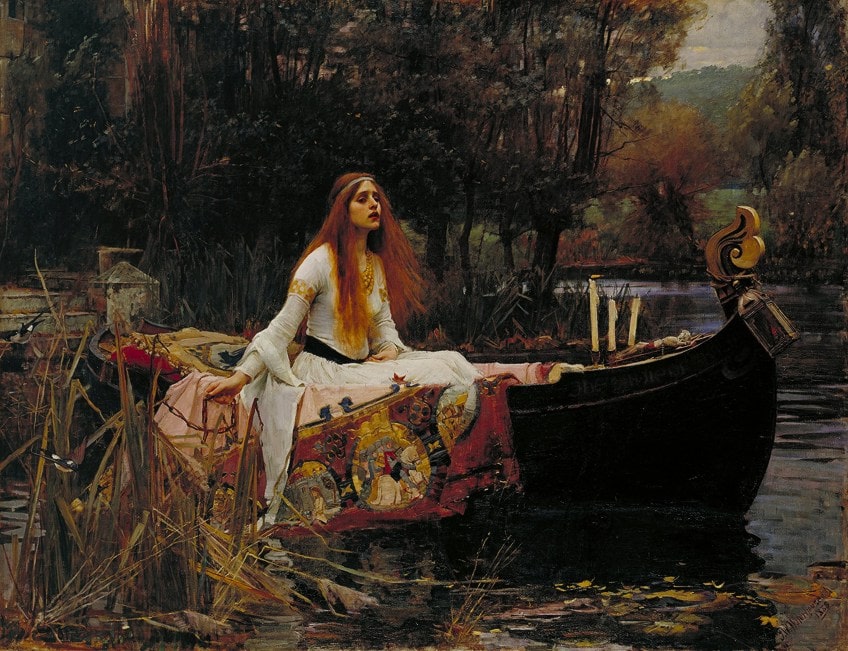
The woman has made her way to a tiny boat after violating the spell by staring out the balcony towards Camelot. This is the scene shown in Waterhouse’s artwork, as the woman departs to meet her fate. She is shown sitting on the fabric she created. The woman’s boat is outfitted with a lamp in the bow and a cross towards the stern. Three candles are placed next to the cross.
Candles were a symbol of life – two of the candles had already burned out, indicating that her death is imminent.
Aside from the metaphorical intricacies, this artwork is prized for Waterhouse’s realistic painting skills. The Lady’s attire contrasts sharply with the considerably deeper tones of the background. Waterhouse’s detailing and color, the emphasis on splendor, the lifelike aspect, and his depiction of her delicate, wistful expression are all examples of his creative brilliance.
The Roses of Heliogabalus (1888) by Sir Lawrence Alma-Tadema
| Dimensions | 132 cm x 214 cm |
| Date Created | 1888 |
| Medium | Oil on Canvas |
| Currently Housed | Privately Owned |
This well-known Victorian work portrays the youthful Roman Emperor Elagabalus having a feast. It depicts a dinner of Roman guests being flooded by drifts of pink rose petals descending from a fake ceiling above. Elagabalus, a young Roman emperor in a golden garment made from silk and tiara, observes the show from a stage behind them, along with other garlanded visitors.
A lady plays the double pipes next to a marble column in the backdrop, donning the leopard hide in front of a bronze sculpture of Dionysus modeled on the Ludovisi Dionysus and overlooking distant hills.
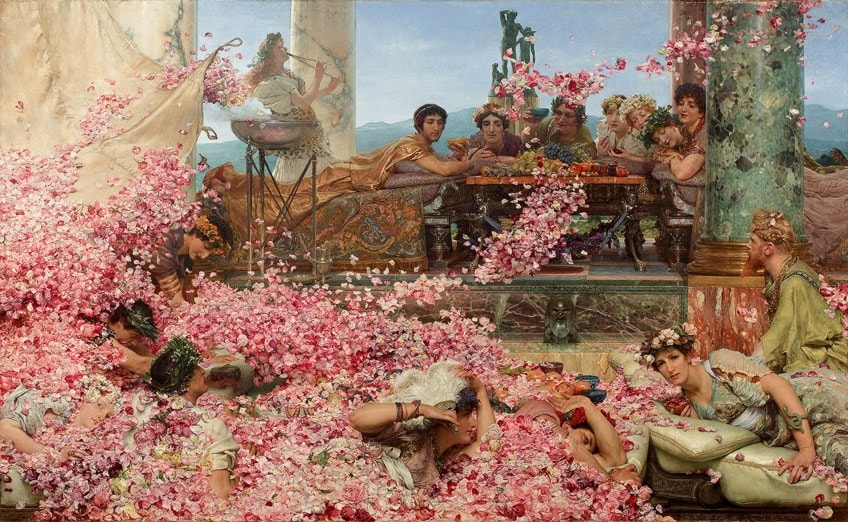
The picture shows a (likely fictional) occurrence from the Augustan History of Elagabalus, the Roman Emperor. Despite the Latin’s reference to “violets and other blossoms,” Alma-Tadema shows Elagabalus suffocating his unwitting visitors with rose petals dropped from a fake ceiling.
He once smothered his guests in wildflowers in a banqueting chamber with a reversed roof, such that some were suffocated to death, unable to climb out to the surface.
Lady Agnew of Lochnaw (1892) by John Singer Sargent
| Dimensions | 127 cm x 101 cm |
| Date Created | 1892 |
| Medium | Oil on Canvas |
| Currently Housed | Scottish National Gallery |
Lady Agnew is reclining in an 18th-century French chair, and the back of the chair is employed as a “curved, supportive structure to confine the body, producing a particular, leisurely grace,” according to art expert Richard Ormond. Sargent envisioned her in a three-quarter length stance, clothed in a white dress with a silk lavender belt around her waistline as an accent. The wall behind her is wrapped in blue silk.
She stares at the picture directly and appreciatively, her countenance conveying the idea that she is having an “intimate discussion” with others who are looking at it.
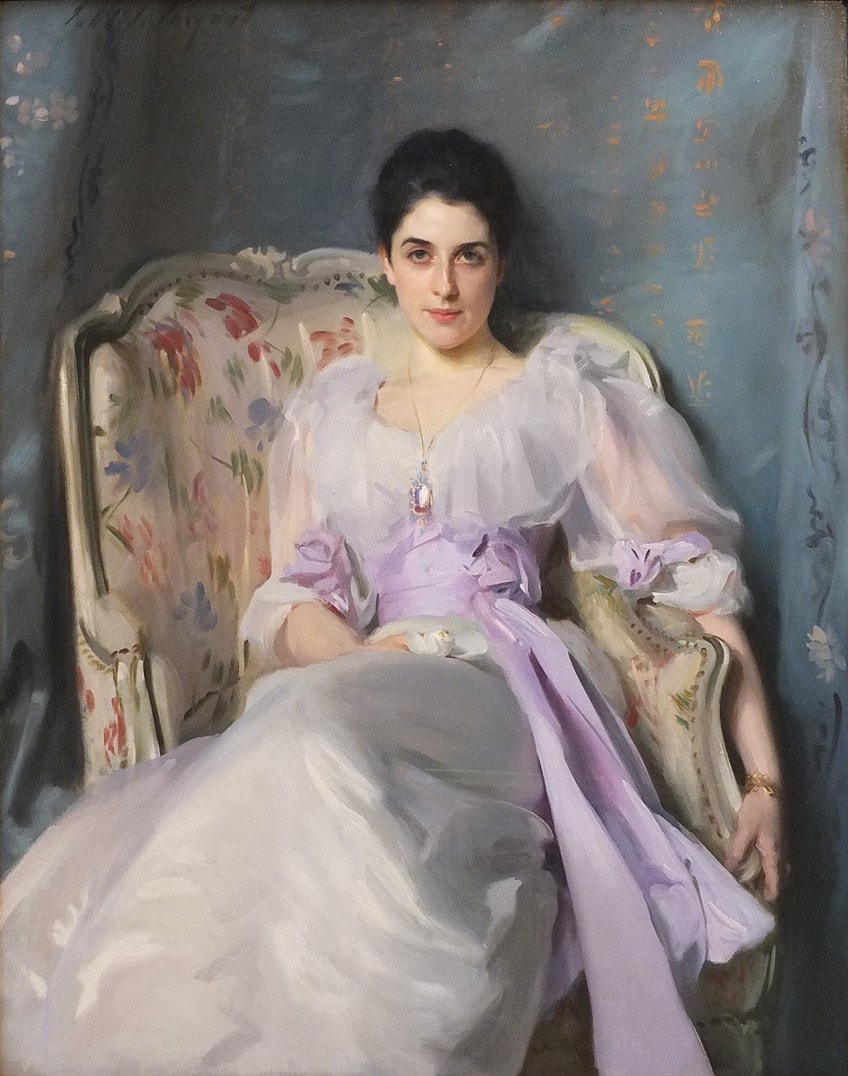
Ormond and Kilmurray observe that she was recovering from flu at that stage, which might explain her sluggish posture. Her gaze is described as “quietly demanding,” as well as “something reserved and enticing in her inquisitive half-smile.” The portrait was “not just a technical accomplishment, but also the best instance of portraiture, in the literal meaning of the term, that has been seen here in a long time.” – according to an article in the Times.
Mr. Sargent has sacrificed none of his delicacies, but he has relinquished his idiosyncrasies and has been satisfied to produce a lovely picture of a nice subject under restful circumstances.
Flora (1894) by Evelyn De Morgan
| Dimensions | 199 cm x 88 cm |
| Date Created | 1908 |
| Medium | Watercolor |
| Currently Housed | The Maas Gallery, London |
Flora is the Roman Goddess of flowers, notably linked with spring; her Floralia festivities were held from the 28th of April to the third of May. The scroll in the corner of the painting is written in Italian and reads as follows:
“Flora, I’m from Florence, and this city was named for a flower. I was born amid the flowers and now live among the mountains of Scotia, thanks to a change of residence. Welcome, and please keep my gift in the northern mists close to your heart.”
Flora is shown in front of a Loquat plant, which produces fruits in the springtime. Within the branches, small birds such as Siskin and Chaffinch may be found. Flora’s gown is decorated with Florentine blossoms and petals cascade from her clutch and land at her feet.

The picture was created completely in Florence and is a tribute to the city and its Renaissance painters — it is definitely influenced by Botticelli’s Primavera. William Imrie, one of De Morgan’s few frequent clients, purchased it, maybe drawn by the allusion to Scotia. He also ordered two more paintings from De Morgan. The lovely frame is carved wood with an oil gilded finishing. It is inspired by the early Italian Renaissance’s ‘tondo’ frame design.
It is probably contemporaneous with the artwork and is embellished with a “ribbon and flower” design on the “torus” area of the portrait.
Flaming June (1895) by Frederic Leighton
| Dimensions | 1,2 m x 1,2 m |
| Date Created | 1895 |
| Medium | Oil Paint |
| Currently Housed | Museo de Arte de Ponce, Ponce |
This painting is often regarded as Leighton’s masterpiece, demonstrating his classicist tendencies. It is considered that the lady shown relates to the Greeks’ frequently carved representations of sleeping nymphs. Flaming June vanished in the early 1900s and was recovered in the 1960s.
It was auctioned shortly after, at a time when Victorian-era artworks were notoriously hard to market.
The sitter’s position is partially based on Michelangelo’s famed Night (1531) statue, which Leighton viewed as “one of the greatest triumphs of Western art.” The resting woman’s posture caused Leighton a lot of problems. He drew numerous early sketches to figure out how she should lie; especially, he struggled to make the angle of her right arm seem organic.

His research indicates that the image went through at least four developmental drafts before Leighton arrived at the final form. Four of these images are naked, while one is covered. The draped woman appears to be the least lifelike, indicating Leighton’s need to sketch from a nude person in order to attain realism to nature.
The deadly oleander stem in the upper right corner may represent the perilous relationship between death and sleep.
The naturalism of the resting woman’s translucent clothing, the beautifully rich colors, and the precisely replicated marble backdrop are all hallmarks of Leighton’s works, as is his use of natural daylight. He makes the sunset in the distance look to be molten gold.
Love and the Pilgrim (1897) by Sir Edward Coley Burne-Jones
| Dimensions | 157 cm x 304 cm |
| Date Created | 1897 |
| Medium | Oil on Canvas |
| Currently Housed | The Tate Gallery |
This fine example of Victorian gothic paintings was Burne-Jones’s final completed big oil painting, although it was begun much sooner. He based it on Chaucer’s Romaunt of the Rose, in which the Loving god helps a Pilgrim on his journey for passion, and devoted it to another person on the same mission, his dear friend Algernon Swinburne.
Love, half angel, half Cupid, leads the troubled traveler out of thorny brambles to stepping-stones with much more thorn bushes, if somewhat viewed by a tiny robin (even with that, lore has it that the bird’s chest was splattered by the blood of Christ when he came flying to soothe him at the death on the cross). It is harsh and stark, with the unfilled pool and desolate mountains in the background adding to the impression of loneliness.
Aside from the birds and hands interacting in the composition’s center, there are few gentle details that distract the eye from the main subject of perseverance.
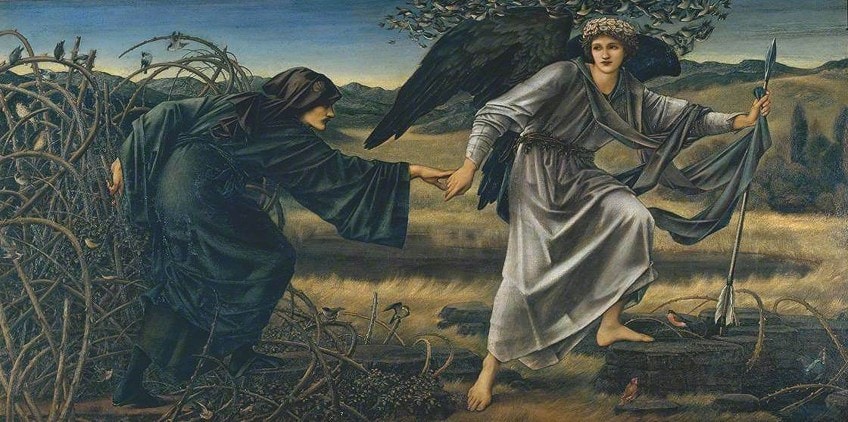
Despite hours spent polishing the intricacies and tonal qualities, it didn’t even sell, prompting Burne-Jones to privately lament that his paintings were now out of sync with the emerging craze for impressionist painting that was gaining traction among buyers. Burne-Jones had been concerned about the work even as he was painting it, despite the fact that he had spent “a universe of thought” on it. He’d felt his vitality dwindle, and he’d been depressed by the deaths of old friends: “It seems as if nothing had been occurring but the deaths of painters.”
This is a tragic conclusion to Burne-Jones’ career. Nonetheless, the end effect is widely recognized as both strong and moving.
Midsummer Eve (1908) by Edward Robert Hughes
| Dimensions | 88 cm x 119 cm |
| Date Created | 1908 |
| Medium | Watercolor |
| Currently Housed | The Maas Gallery, London |
Edward Robert Hughes started his profession as a Pre-Raphaelite artist. His art was influenced by Symbolism, and the bulk of his works were watercolors. He was a diligent perfectionist who made several precise preliminary preparation sketches before beginning his final painting.
Hughes’ art was heavily influenced by Shakespearean motifs.
Midsummer Eve is evocative of Shakespeare’s play A Midsummer Night’s Dream, which is about the mismatching of lovers on a lovely midsummer night. ‘Lord what idiots these humans are,’ says the fairy Puck in this drama. Looking at the image, one can well envision the small fairies making such comments to the woman, who may easily be Hermia, one of the unhappy lovers who gets stranded in the woods, rising from a dream to find herself in a circle of fairies whirling about her.

The picture has a powerful feeling of mysticism. But, in an odd sense, it’s almost as if the woman anticipated seeing the fairies, or wasn’t astonished by their existence. She bends towards them to get a decent view, as though she is curious about what they are discussing. She is not scared in the least. She may have even wished for them to materialize based on the way she is outfitted.
Midsummer’s Eve is historically an evening when young ladies dance about fires and express aspirations for their beloved to appear to them. It’s a beautiful night for casting spells. Additionally, it is the shortest evening of the year, and the illumination in the picture implies that, while it is not dark, it is late in the evening.
And that wraps up our look at Victorian Gothic paintings and Victorian artworks. Victorian paintings express the dreams and wishes of a strong England remaking itself in the face of changing waves. Classicism and Neoclassicism, as well as Romanticism and Impressionism, are examples of Victorian art trends. Each of these groups developed its own visual style for Victorian-era artworks.
Take a look at our Victorian era paintings webstory here!
Frequently Asked Questions
What Distinguishes Victorian Paintings?
For thematic content, Victorian art began to reject the realistic features of earlier works in favor of fantasy and mythology. Many late Victorian pieces are diverse and ambiguous in nature. The majority of Victorian art used bright and cheery colors, as well as a keen attention to extremely minor details within the subject. In Victorian painting, the English environment of rolling hills and little farms was a popular setting.
What Were the Themes of Victorian Artwork?
Women were featured in a large portion of Victorian art developed throughout the 19th century. Nudity, nymphs, and landscapes were particularly popular. Some art experts at the time condemned Victorian art for missing subtle connotations. Other reviewers panned Victorian art because of its typically harsh lines, which they argued obscured compositional elegance.
Isabella studied at the University of Cape Town in South Africa and graduated with a Bachelor of Arts majoring in English Literature & Language and Psychology. Throughout her undergraduate years, she took Art History as an additional subject and absolutely loved it. Building on from her art history knowledge that began in high school, art has always been a particular area of fascination for her. From learning about artworks previously unknown to her, or sharpening her existing understanding of specific works, the ability to continue learning within this interesting sphere excites her greatly.
Her focal points of interest in art history encompass profiling specific artists and art movements, as it is these areas where she is able to really dig deep into the rich narrative of the art world. Additionally, she particularly enjoys exploring the different artistic styles of the 20th century, as well as the important impact that female artists have had on the development of art history.
Learn more about Isabella Meyer and the Art in Context Team.
Cite this Article
Isabella, Meyer, “Victorian Paintings – Looking at the Best Victorian-Era Art.” Art in Context. November 30, 2021. URL: https://artincontext.org/victorian-paintings/
Meyer, I. (2021, 30 November). Victorian Paintings – Looking at the Best Victorian-Era Art. Art in Context. https://artincontext.org/victorian-paintings/
Meyer, Isabella. “Victorian Paintings – Looking at the Best Victorian-Era Art.” Art in Context, November 30, 2021. https://artincontext.org/victorian-paintings/.


